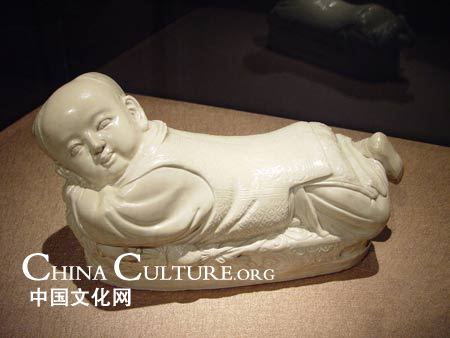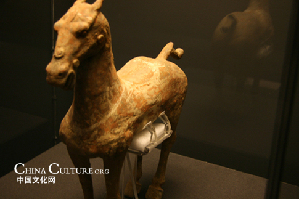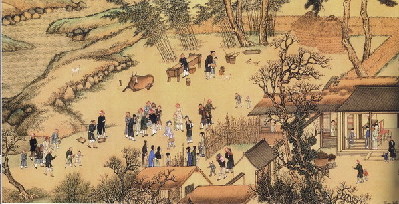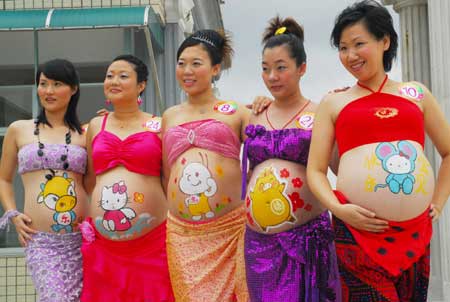| Home > Living in China > Art |
Nail Sculptures
The base of a sculpture, just like the framework of a painting, separates the creation from the realistic space. When the base is removed, the creation is integrated with its surrounding space and becomes part of the realistic space, just like a common object in daily life.
 |
 |
 |
Wang Xiaohui has made an artistic breakthrough with her recent sculpture creations "Nail Series". As a public installation, "Nail Series" overthrow conventional concepts of sculpture, featuring no foundations, structures of forms. A tiny part of the human body is amplified and installed directly on the ground, without traditional monument-like bases, highlighting Wang's constant artistic focus on humanity.
When Wang demonstrates part of the human body as an object, she implies that the body has become part of our daily life, just like sculptures of human figures in the street, which revoke a life experiences or reflect our life, instead of calling people to make icon worship. Wang selects forms not simply for the sake of form itself; she use forms to imply experience in daily life, especially women's experience.
As daily life often means experience of the time, Wang's sculptures are highlights of contemporary themes. Her works of female themes has gained her the reputation as an artist with "contemporary value".
"Nail Series" are not real nails directly acquired from the human body. The sculptor only borrowed the concept of existing objects. The value of Wang's creations does not lie in form, as she is not an artist caring much about form. What she really cares about is "body". All her concepts about the base and existing objects come up with requirements of "body", or in other words, creations in form come from experience in "body".
It is an important transformation for Wang, implying that her creation has transformed from negative, closed demonstration to open, experience-based and mental presentation. As a female artist, she no longer creates from men's perspective, but with self-determined motives.
In quite a long time, Wang's creations featured typical characteristics of the 1980s, a non-academic, aesthetic style focusing on realism and transformation. She applied integrated experience in handicraft art to her sculpture creation. Just like the impact of the New Art Movement on the academic art, handicraft art is naturally empowered with the beauty of form, Wang's expression of form is delicate, sensitive, quiet and elegant, with movement, lines and images all united in soft rhymes. It is particularly true when she depicts special subjects such as girls, mothers and sons.
 |
 |
But Wang does not solely pursue the beauty of form. Unique understanding and experiences of life as a woman make Wang's creations different from others. Beauty of woman is a subconscious theme of Wang's early works. Monument-like styles and elements of modernist art endowed the beauty of woman with heroic implications raise and worship of the beauty of woman. Like many other female artists, Wang probably didn't explicitly express female consciousness, but she made her own interpretations on the beauty of woman in a limited manner.
In some sense, the beauty of woman is not defined by women themselves, but the society, or by men, Women have to abide by dual standards on morality. But Wang's recent creations have implied the change of this conception. "Nail Series" are self-review and self-recognition of women's ways of life.
The designs of "Nail Series", beautiful or not, are direct presentation of realistic objects. "Nail Series" mean tradition and fashion alike, existing on its own value. When Wang amplified "Nail Series" from small creations to large installations in the public space, they were empowered with challenging strength; they are hardly appreciated in a traditional aesthetic way.
 |
 |
We cannot judge how deep Wang is influenced by feminism. "Nail Series" have been endowed with cultural implications, which can be considered a symbol of independence of female personality. When this symbol is integrated with other cultural symbols, it implies that female culture is equally legitimate.
Superficially, Wang said a farewell to her own tradition and shifted from sculpture to installation. But it is not an installation in its full meaning, but a transformation of sculpture in the way of installation.
The transformation indicates Wang's constant pursuit of creativity in form, but more importantly, it means that thinking and criticism have become part of her works. When social criticism has become an important element of contemporary art, Wang has realized an important breakthrough.
"Nail Series" are composites of existing objects. The use of every symbol, from folk art to porcelain patterns, from shallow relief sculpture to mountain and water paintings, has implications of certain cultures and collective experience.
Therefore, from her creations, we can see more elements of spirit, which go through the society, the history and the existence of humanity. Wang has integrated her own experience and understanding with the creation of form and thus form is open to social and collective experience. In "Nail Series", Wang makes a breakthrough in her previous sole pursuit of standard beauty and endows the form of beauty with significance of thought.
Author: Cindy
Art
 more
moreClassic Chinese Handicraft:
Porcelain pillows, as classic Chinese handicraft,

Chinese Treasures Returned from
As witness of Chinese culture and custom, countless treasures

The lost legacy: classical music
Accompany by the long history of China, Chinese classical music

Customs
 more
moreChinese Kungfu
Kungfu Taste: Learn Martial Art in Shaolin Temple
The mention of Shaolin Temple conjures up images of a quiet and
Keet Kune Do will reappears on screen: BRUCE Lee and
The Legend of Bruce Lee is shot by China Central Television
The Road to the Olympic Games for Wushu
Wushu, also called kungfu, martial arts, is attracting more and more




 print
print  email
email  Favorite
Favorite  Transtlate
Transtlate 
